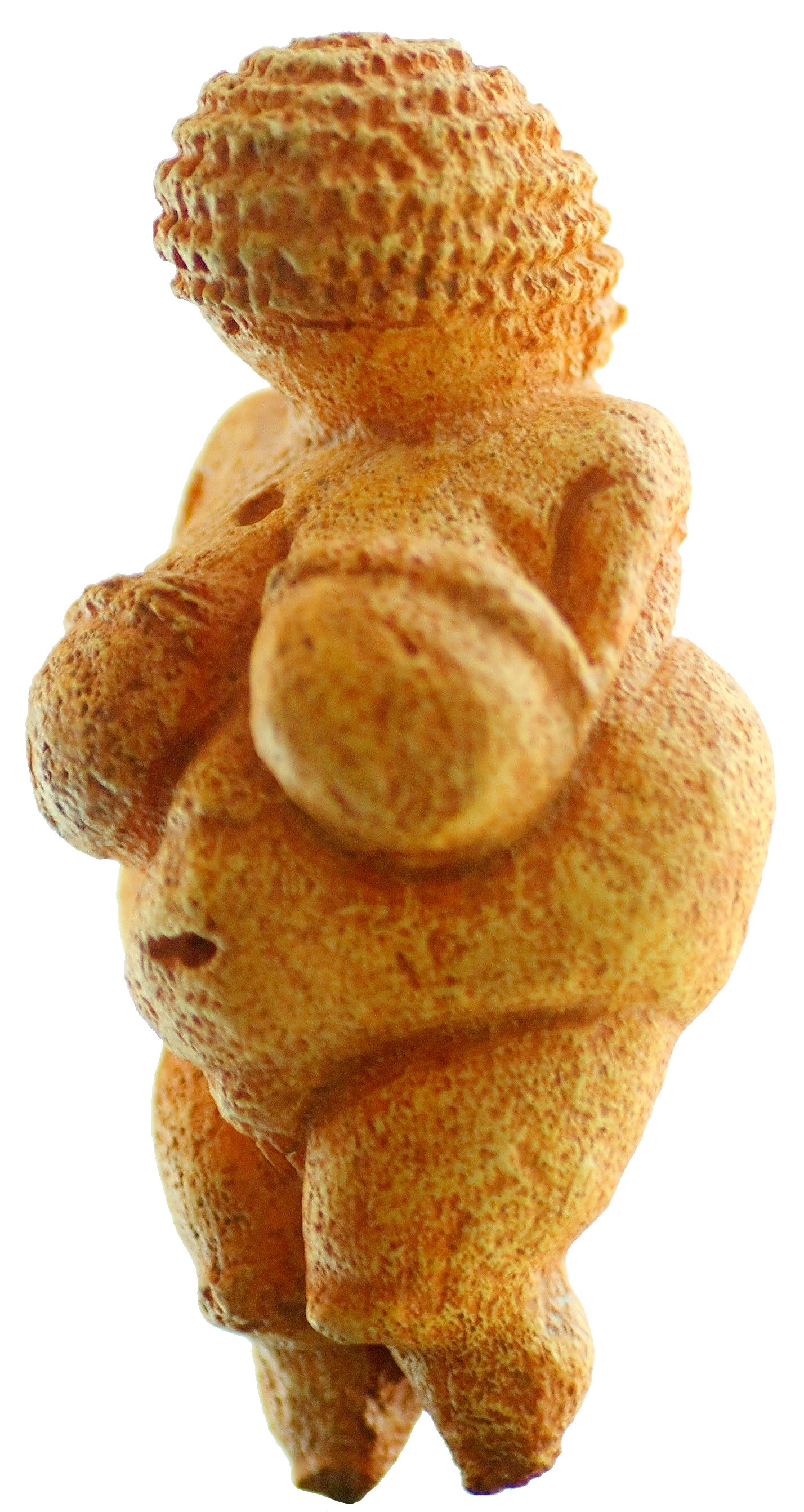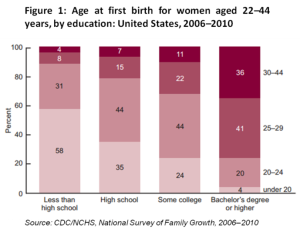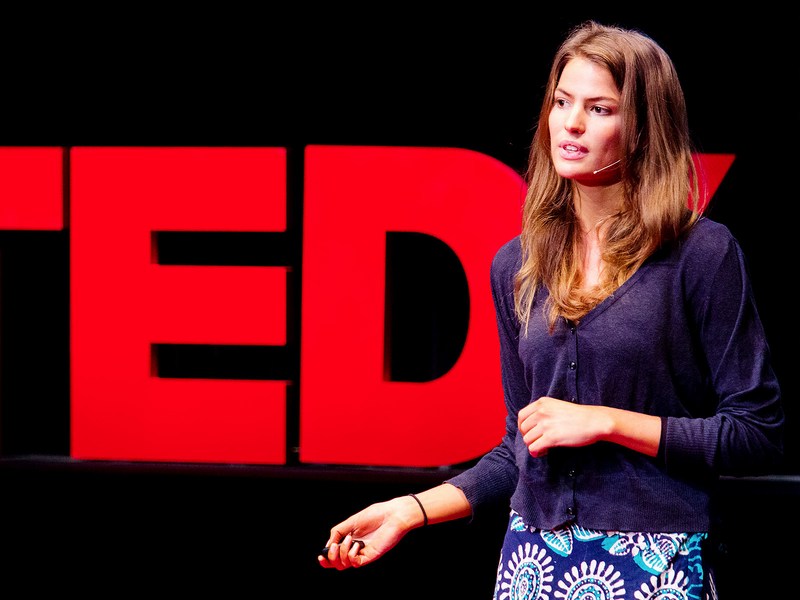Summary of Issues: Career women, Fertility, body image, courtship, sexuality & education
The inspiration for this sculpture is based on the conflict of body image, motherhood and attracting a mate. We study the Venus of Willendorf as part of our grade 10 syllabus....I was fascinated by the exaggeration of certain features. Our current society emphasises a totally different type of figure. Thus woman are under stress to alter their bodies in way that changes the natural body proportions that allow women to have children.

"Artist Nickolay Lamm re-creates an American icon using real-world measurements."
Image and text from: What Barbie Would Look Like If She Resembled an Actual Woman? posted By on http://www.takepart.com/article/2013/07/03/barbie-nickolay-lamm on July 04 2013
Andri Antoniades (2013) writes the following about how commercial products and the media has created unrealistic body images that women aspire to:
"Barbie never claimed to be a symbol of feminist solidarity, or even a symbol of reality. It’s already been proven that her oddly proportioned body couldn’t possibly be sustained by an actual human being—and yet her appearance remains an iconic symbol of femininity that millions of girls admire.That may not change any time soon, but some artists are doing their best to demonstrate that realistic images can be just as desirable as ones based on pure fantasy."
Caroline Heldman's talk is fascinating as she develops a test that helps us identify when an image is demeaning to women.
Link to Caroline Heldman's Ted Talk on Sexual Objectification
Image from: Meena-g.tumblr.com, (n.d.). Somewhere in CA.... [online] Available at: http://meena-g.tumblr.com/ [Accessed 21 Jul. 2014].
.
Intriguingly the exaggeration/ distortion of female features is not new. Dr Nigel Spivey writes the following the unrealistic nature of the Venus of Willendorf's body:" The question is why were prehistoric humans stimulated by an exaggerated image such as this? The answer, according to neuroscientist V.S. Ramachandran and others, lies in the workings of the human brain, in a neurological principle known as the "peak shift."
The people who made this statue lived in a harsh ice-age environment where features of fatness and fertility would have been highly desirable. In neurological terms, these features amounted to hyper-normal stimuli that activate neuron responses in the brain. So in Paleolithic people terms, the parts that mattered most had to do with successful reproduction - the breasts and pelvic girdle. Therefore, these parts were isolated and amplified by the artist's brain.
Read more at: http://www.pbs.org/howartmadetheworld/episodes/human/venus/
| Material | Oolitic limestone |
|---|---|
| Created | c. 28,000 B.C.E – 25,000 B.C.E. |
| Discovered | 1908 near Willendorf, by Josef Szombathy |
| Present location | Naturhistorisches Museum,Vienna, Austria |
Thus my ceramic sculpture compares woman to a peacock and the various pressures related to child-bearing and fertility.

Hopkins, S. (2013). shopkins-fossick: The Pill. [online] Shopkins-fossick.blogspot.com. Available at: http://shopkins-fossick.blogspot.com/2013/12/the-pill.html [Accessed 16 Jul. 2014].
Wolf writes about how in the past woman's power was related to sex. Before the invention of the pill, safe sex was only available through marriage and marriage was the main thing women aspired to, as it allowed them secure independance (a home of their own) and social standing. However the pill has changed when women can have children, which allows them to spend more time pursuing a career before they start a family. The pill has also changed how women conduct relationships with men.
Wolf's study also discusses how woman who are high academic achievers at school tend to focus on their studies rather than exploring their sexuality and tend to become sexually active later (i.e. in university). In contrast to graduate's behaviour Wolf states that non-graduates or high school drop-outs have children earlier and become sexually active earlier. Thus Wolf states that the invention pill has changed how women behave sexually as well as allowing women to spend more time developing their careers.

Image from: http://lirneasia.net/2014/02/the-xx-factor-how-working-women-are-creating-a-new-society-part-1/
However our changing society has also resulted in couples relationships taking strain.
Reference image
I have also meet many women whose fertility has decreased due to stress. The pill also changes women's bodies and this can be stressful in itself. Thus this sculptural piece explores how women's roles are changing and how female sexuality is influenced by many different factors. Thus part of the challenge of being a modern working women is knowing what to prioritize and what to lay down.
Miln-Tyte states that "Traditionally it was always men who followed their fathers into the family business. But in the last 15 years or so, the number of women joining family firms has almost quintupled. More and more daughters are choosing to go where once only their brothers did - and some are taking over the reins. But even today, women face different challenges than men when they enter family companies."
Resh's book called Men Women, Sex, and Power is about "how women particular face certain gender-specific challenges to developing healthy relationships with pleasure. Motherhood, professional development and achievement, and the impact of culture on women’s sense of self will be emphasized in relationship to the markers of emotional well-being." Read more at: http://evelynresh.dreamhosters.com/lectures/

A screen shot showing a graph of how the average no of children per woman in South Africa has decreased over the past 200 years. Image from: http://www.gapminder.org/world/
I think in the past women's roles were more defined, as families were larger and women spent more time at home. Wolf (2013) also discusses how the elite working parents are under tremendous pressure to produce children that continue to climb the social ladder through academic achievement. Thus many parents spend long hours investing in their children's futures. A raising trend among working parents is to employ educated au pairs to assist with child care. However paying another person's salary requires one to earn substantial incomes, which means that both parents often work to cover living expenses.
Thus, Wolf(2013) states although the pill allows women to be more promiscuous, many people still get married so that they can raise children together. Interestingly Wolf(2013) also points out that high salaries and state subsidies make single-parent homes feasible.
One of the most discussed topics in an all girls school is that of relationships and much energy is spent searching for/ preparing for marriage/ romantic relationships.
Resh has also written a book titled The Secret Lives of Teen Girls, which discusses "questions and concerns abound regarding the prevention of teen pregnancy, transmission of STIs, and helping girl’s develop a safe and satisfying relationship to sex. The national effort towards abstinence has proven – time and again – to be an insufficient and unsuccessful approach to helping teen girls manage with their normal interests in sex and decisions about being sexually active. This lecture gives parents and health care providers real tools to use to reduce their own feelings of panic about girl’s safety and ways to help girls make the safest, most sensible choices about sexual activity. " Read more at: http://evelynresh.dreamhosters.com/lectures/
I think many women's safety is threatened in societies that emphasize promiscuity and I have had numerous discussions with learners through teaching life orientation and running small groups that discuss sexuality. Thus this sculptural series relates to how all girls schools are preparing learners for modern society and the challenges women face in understanding their role in society.

Image from http://www.apmesh.com/welded-wire-mesh/12241R012.html
Although the pill has minimized the risk of falling pregnant outside of marriage, I believe that media does not show the complexity of sexual relationships and this has caused many teenagers to experiment sexually. I have also chatted to many learners who have had painful experiences and I believe that there is a need to increase learners awareness about the effects of sexual experimentation. I am also concerned that early sexual experiences can hinder learners academic development and this affects their earning power. Thus I would like to place my figure on a nest of barbed wire as a metaphor for the need for safety and security in protecting woman from damaging sexual experiences.

A photo of Neith Moore's sculpture of the Venus of Willendorf, which inspired me to create my own sculpture.
Here are some images of my unfired porcelain figure.

I am hoping this figure won't explode. Thus I am drying it at 40C in drying oven before soaking it at 100C in the kiln.
I think I will create a tail for my figure made from books and other objects related to the multi-tasking of the modern female and this will create a reference to the peacock's tail which is integral to courtship.

On October 17, 2003 John Pickrell in England writes the following about a peacock for National Geographic News:
"The peacock is one of the natural world's most elaborate and showy males, mustering its physical resources to wow potential mates with its enormous and gaudy, fan-like tail plumage." "The male peacock tail contains spectacular beauty because of the brilliant, iridescent, diversified, colorful eye patterns," said Jian Zi, a physicist at Fudan University in Shanghai, China.
Read more at: http://news.nationalgeographic.com/news/2003/10/1016_031017_peacockcolors.html
Pickerell's article discusses the science behind the Peacock's beauty. Wolf also writes about how beauty affects women's earning power and how working women's financial independence is changing their spending habits. Wolf's study also discusses power-dressing and how woman alter others perception of them through their physical presentation. Cameron Russell's Tedtalk on being a model, captures the pressure placed on teeangers through the media creating unreal constructs.

"Cameron Russell admits she won “a genetic lottery”: she's tall, pretty and an underwear model. But don't judge her by her looks. In this fearless talk, she takes a wry look at the industry that had her looking highly seductive at barely 16 years old." Click here to view the Ted Talk

Cristen Conger writes that: "The male of the peafowl species, the peacock has long symbolized beauty, regality and pride. Like many malebirds, the peacock's appearance far outshines that of the demure peahen. Hormones trigger the beginning of the molting process, which is timed to occur after the mating season to allow for the energy required to grow the new feathers [source: Cornell Laboratory of Ornithology].
In about seven months -- in time for the peafowl mating season to come back around -- peacocks will regrow their plumes longer and fuller. " Image and text from: http://animals.howstuffworks.com/birds/peacock-feathers.htm
Stuart Burgess on August 1, 2001 wrote the following about the Peacock's tail feathers:
"There is no doubt that the peacock tail feathers do play a role in the courtship ritual of peafowl. Many creatures have a courtship ritual that acts as a cue for mating. In the case of the peafowl, the peacock shows his intention to the peahen by displaying his feathers. However, even though the display feathers have a role in the courtship ritual, this does not necessarily mean that the female is ‘attracted’ to the feathers. When the peahen observes the feathers of the peacock, it may be that her only reaction is to understand that the peacock is ready for mating." Read more at: https://answersingenesis.org/natural-selection/peacock-tail-beauty-and-problems-theory-of-sexual-selection/
There is much research on how much the beauty of the male peacock's feather emphasizes mate selection, just as there is much research on the complexity of romantic relationships and family structure. Wolf seems to maintain that beauty, education and earning power influence mate selection, whereas Resh discusses how relationships are sustained through prioritizing and understanding eachother's signals. Smith (2014) also emphasises how kindness creates a trusting environment that produces a healthy relationship.
Smith's article is based on Psychologist John Gottman's research which explores people's response to their partners requests for connection (what Gottman calls “bids.”)
Smith writes the following: "People who turned toward their partners in the study responded by engaging the bidder, showing interest and support in the bid. Those who didn’t—those who turned away—would not respond or respond minimally and continue doing whatever they were doing, like watching TV or reading the paper. Sometimes they would respond with overt hostility, saying something like, “Stop interrupting me, I’m reading.” These bidding interactions had profound effects on marital well-being. Couples who had divorced after a six-year follow up had “turn-toward bids” 33 percent of the time. Only three in ten of their bids for emotional connection were met with intimacy. The couples who were still together after six years had “turn-toward bids” 87 percent of the time. Nine times out of ten, they were meeting their partner’s emotional needs. "
(Read more at: http://www.theatlantic.com/health/archive/2014/06/happily-ever-after/372573/).
Thus research seems to identify various factors that create a safe environment that fosters healthy relationships.Thus this work explores the power of fertility and beauty and its effect on the educated working woman through the metaphors of the peacock, the pill box, stylistically referencing the Venus of Willendorf and the barbed wire nest symbolizing safety and security.
A very rough photoshop image of my idea...I am using this as reference to create a proper design drawing.
I may place my figure on own of my blue china plates as a link with one the other pieces I am creating.
I may also create my own plate with an altered female figure to show the change in some working woman's daily activities.
Bibliography:
Antoniades, A. (2013). What Barbie Would Look Like If She Resembled an Actual Woman (PHOTOS). [online] TakePart. Available at: http://www.takepart.com/article/2013/07/03/barbie-nickolay-lamm [Accessed 11 Jul. 2014].
Apmesh.com, (n.d.). Barbed Wire - Anping BOYANG Metals Mesh Fence CO.,LTD. [online] Available at: http://www.apmesh.com/welded-wire-mesh/12241R012.html [Accessed 20 Jul. 2014].
Burgess, S. (2001). Peacock Tail Beauty and Problems with Theory of Sexual Selection | Answers in Genesis. [online] Answersingenesis.org. Available at: https://answersingenesis.org/natural-selection/peacock-tail-beauty-and-problems-theory-of-sexual-selection/ [Accessed 11 Jul. 2014].
Conger, C. (2014). HowStuffWorks "If a peacock loses his tail feathers, do they grow back?". [online] HowStuffWorks. Available at: http://animals.howstuffworks.com/birds/peacock-feathers.htm [Accessed 11 Jul. 2014].
Finn, C. (2011). Barb Wire Nest. [online] Flickr. Available at: https://www.flickr.com/photos/31302507@N03/5961301921/?rb=1 [Accessed 16 Jul. 2014]
Hopkins, S. (2013). shopkins-fossick: The Pill. [online] Shopkins-fossick.blogspot.com. Available at: http://shopkins-fossick.blogspot.com/2013/12/the-pill.html [Accessed 16 Jul. 2014].
Miln-Tyte, A. (2014). SoundCloud - Hear the world’s sounds. [online] SoundCloud. Available at: https://soundcloud.com/broadexperience/the-broad-experience-39-daughters-in-charge [Accessed 11 Jul. 2014]
Miln-Tyte, A. (2014). SoundCloud - Hear the world’s sounds. [online] SoundCloud. Available at: https://soundcloud.com/broadexperience/the-broad-experience-38-women [Accessed 11 Jul. 2014].
Miln-Tyte, A. (2013). SoundCloud - Hear the world’s sounds. [online] SoundCloud. Available at: https://soundcloud.com/broadexperience/the-broad-experience-27-rise [Accessed 11 Jul. 2014].
Pickrell, J. (2003). Peacock Plumage Secrets Uncovered. [online] News.nationalgeographic.com. Available at: http://news.nationalgeographic.com/news/2003/10/1016_031017_peacockcolors.html [Accessed 11 Jul. 2014]
Resh, E. (2014). Evelyn Resh | Lectures. [online] Evelynresh.dreamhosters.com. Available at: http://evelynresh.dreamhosters.com/lectures/ [Accessed 11 Jul. 2014].
Russell, C. (2014). Looks aren't everything. Believe me, I'm a model.. [online] Ted.com. Available at: http://www.ted.com/talks/cameron_russell_looks_aren_t_everything_believe_me_i_m_a_model [Accessed 14 Jul. 2014].
Senanayake, L. (2014). The XX Factor: How working women are creating a new society (Part 1) » LIRNEasia - a regional ICT policy and regulation think tank active across the Asia Pacific. [online] Lirneasia.net. Available at: http://lirneasia.net/2014/02/the-xx-factor-how-working-women-are-creating-a-new-society-part-1/ [Accessed 11 Jul. 2014].
SMITH, E. (2014). The Critical Importance of Kindness. [online] The Atlantic. Available at: http://www.theatlantic.com/health/archive/2014/06/happily-ever-after/372573/ [Accessed 11 Jul. 2014].
Spivey, N. (2006). How Art Made the World . Episodes . More Human than Human . Venus of Willendorf | PBS. [online] Pbs.org. Available at: http://www.pbs.org/howartmadetheworld/episodes/human/venus/ [Accessed 11 Jul. 2014].
Wolf, A. (2013). The XX factor. 1st ed. London: Profile Books.






No comments:
Post a Comment